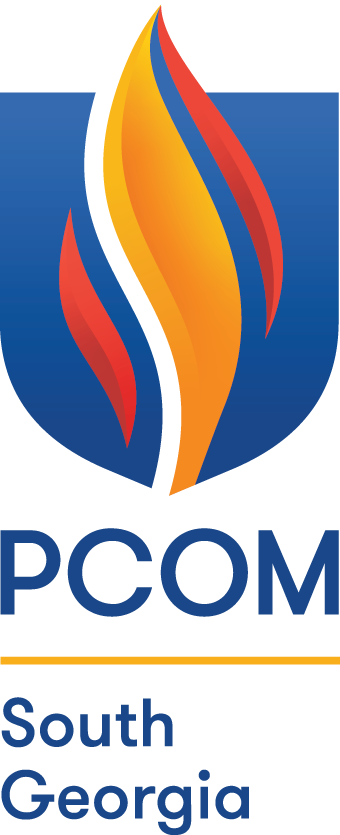What is Osteopathic Medicine?
August 20, 2019As classes begin at the newly opened PCOM South Georgia, we explore the doctor of
osteopathic medicine profession and philosophy.
For the past two and a half years, the South Georgia community has been awaiting the
region’s new, four-year medical program in Moultrie, Georgia. The newest location of Philadelphia College of Osteopathic Medicine, PCOM South Georgia – Southwest Georgia’s only four-year medical program – opened
in August to great fanfare. Now that the celebrations have died down, the inaugural
class of 55 students is learning how to practice osteopathic medicine—but what does
this mean?
DO vs MD: Similarities and Differences
The simple answer is that, like an MD (doctor of medicine), a DO (doctor of osteopathic
medicine), is a fully-qualified physician licensed to practice medicine in the United
States. Both MDs and DOs typically attend medical school for four years; the first
two years focus on classroom learning, while the last two years are spent in the field
practicing with clinical faculty members. That said, there are some differences between
the two professions.
Whole-person health care
Most notably, there is a difference in approach. DOs practice a whole-person approach
to health care—one that sees past the illness or disease to consider the health impact
of other factors such as lifestyle and community, and work to address and remove barriers
that may impede a healthy life. DOs consider their patients as partners on this journey,
not just through injury and disease prevention, but also through health education.
Focus on prevention
The American Osteopathic Association (AOA), the professional organization for more
than 145,000 DOs and DO students in the US, defines the osteopathic approach to medicine
as one that “focuses on prevention and helping to promote the body's natural tendency
toward health and self-healing.” Additionally, through the use of standardized and
simulated patients, DO students have the chance to practice their all-important communication
skills with a wide variety of individuals.
Hands-on evaluation and treatment
As fully licensed physicians, DOs are able to prescribe medicine, conduct surgery
and use cutting-edge technology to diagnose disease and assess injury just as MDs
do, but they have an additional tool in their toolbox: osteopathic manipulative medicine (OMM), through which DO students are taught to use their hands to diagnose and treat illness
and injury.
DO students take approximately 200 additional hours of training in OMM. These techniques
teach that form influences function, and through the hands-on manipulation of muscles
and tissues, students learn how to alleviate pain and restore motion and natural function
to the body, as well as help the body function more efficiently.
DO Profession Growth
What’s more, osteopathic medicine continues to grow exponentially; in 2018, the AOA
reported an 85 percent increase in DO students over the previous 10 years, and a report
released in early 2019 from the American Association of Colleges of Osteopathic Medicine
(AACOM) found that for the first time ever, DO students accounted for more than one
out of every four medical students in the US. That same report showed an almost seven
percent increase in total enrollment year-over-year at the nation’s 38 colleges of
osteopathic medicine—to a total of nearly 31,000.
Primary care in underserved areas
DOs can be found practicing in rural and urban settings, in the military and civilian
world, and in all of the same specialties as their MD counterparts. AACOM reports
more than 30 percent of DO graduates choose to practice in primary care fields such
as family medicine, pediatrics, OB/GYN and internal medicine, and that many indicate
they plan to practice in rural or underserved areas.
In fact, it is a rural community – Kirksville, Missouri – that is known as the birthplace
of osteopathic medicine. In the late 19th century, Andrew Taylor Still, DO, realized
that his era’s medical practices often caused more harm than good. The system of medicine
he would develop promoted the body’s ability to self-heal. He called this process
osteopathy, which is what is now known as osteopathic medicine.
With the healthcare field shifting towards a focus on patient-centered care and wellness,
osteopathic medicine is poised to meet these changes head-on, as this focus has been
a basic tenet of the profession since its founding. And with a more than 120 year
tradition of training highly competent and caring health practitioners, Philadelphia
College of Osteopathic Medicine and its newest location, PCOM South Georgia, are well-suited
to help meet the healthcare needs of the region.
For more information, visit pcom.edu.
You May Also Like:
About PCOM South Georgia
In 2019, Philadelphia College of Osteopathic Medicine (PCOM), a premier osteopathic
medical school established in 1899, extended its commitment to the Southeast by establishing
PCOM South Georgia. An additional teaching location in Moultrie, Georgia, PCOM South Georgia offers both
a full, four-year medical program leading to the Doctor of Osteopathic Medicine (DO)
degree and a Master of Science in Biomedical Sciences. PCOM is a private, not-for-profit
institution that trains professionals in the health and behavioral sciences fields.
Joining PCOM Georgia in Suwanee in helping to meet the healthcare needs of the state, PCOM South Georgia
focuses on educating physicians for the region. For more information, visit pcom.edu or call 229-668-3110.
Contact Us
For general media inquiries, please contact the Office of Marketing and Communications
at 215-871-6300 or communications@pcom.edu. Visit our media relations page to view contact information for public relations personnel.
Connect with PCOM South Georgia

